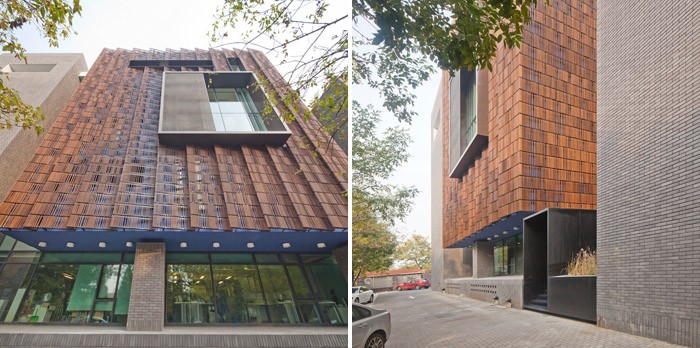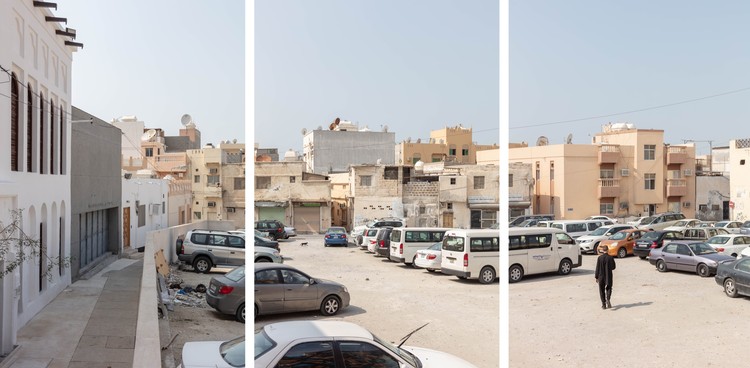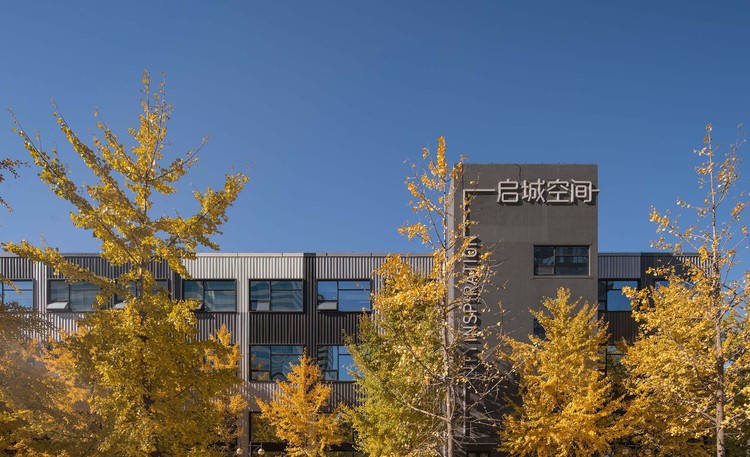PHÄNOMENTA Science Centre KKW Architekten + WERNER Bauingenieure + formTL
2015-10-02 05:00
Axon © formTL
轴突(Axon)ForTL


架构师提供的文本描述。位于吕登沙伊德的PH NOMENTA科学中心延伸的塔楼有可能成为著名的地标和建筑及工程卓越的象征。根据施耐德·舒马赫的可行性研究,KKW Architekten、Werner Bauingenieure和ForTL Ingeniure之间的跨学科合作创造了一座令人印象深刻的钢结构桁架塔,其内部覆盖着一个螺旋状的薄膜。通过应用塔内原理,该一级结构包括一个独立于二次轴承结构的福柯摆。这种明确的分离允许钟摆自由运动,而不受来自原始结构的风和振动的影响,从而允许参观科学中心的人观察地球的自转。
Text description provided by the architects. The striking tower on the extension of the PHÄNOMENTA Science Centre in Lüdenscheid has the potential to become a famous landmark and a symbol of architectural and engineering excellence. Based on a feasibility study by schneider+schumacher, the interdisciplinary collaboration between KKW Architekten, WERNER Bauingenieure and formTL Ingenieure created an impressive steelwork truss tower that encompasses a helix shaped membrane stretched over its interior. By applying the tower-in-tower principle, this primary structure encloses a Foucault pendulum that is suspended independently of the secondary bearing structure. This defined separation allows the pendulum to move freely without being influenced by wind and vibrations from the primary structure, thus allowing visitors to the Science Centre to observe the Earth's rotation.
© beier+wellach projekte
c.贝尔·韦拉赫·普罗耶克特


这座塔只是PH NOMENTA延伸部分的一部分:一个两层的延伸创造了一个额外的1,400平方米的展览空间和以表现形式为特征的区域。这是一个直接的结果是塔的几何要求,但它也确保了展览空间的功能。混凝土结构的整体设计也是独特的钢结构的基础。该框架由贯穿混凝土结构的斜支撑组成,轻钢桁架塔结构由三角形空心圆管截面焊接而成。复杂的设计,包括节点,多达六个管道在不同的角度相交,需要一个全面的三维CAD分析。与预张和风有关的薄膜力被直接输送到连接处,以防止框架上的过度弯曲应力。为了便于各塔段的吊装和装配,在连接边的框架中设置了特殊的螺旋连接,并覆盖了特殊的半圆柱形金属薄板。这消除了焊接工作在高处的需要,并隐藏了分割部分。
The tower is just one part of the extension to PHÄNOMENTA: a two-storey extension creates an additional 1,400 m2 of exhibition space and zones characterised by expressive forms. This is a direct is a result of the requirements of the tower's geometry but it also ensures the functionality of the exhibition space. The monolithic design of the concrete building also serves as the foundation for the distinctive steel structure. The framework consists of diagonally supported struts throughout the concrete structure and the elegant light-weight steel truss tower structure is made up of triangular circular hollow tube sections that are welded airtight. The complex design, incorporated nodes where up to six pipes meet at various angles, required a comprehensive 3D CAD analysis. Membrane forces associated with pretensioning and wind are channelled directly into the junctions with a view to preventing excessive bending stress on the frames. In order to facilitate with hoisting and assembling of the individual tower segments, special screw connections were arranged in the frames beside the junctions and covered with special semi-cylindrical metal sheets. This eliminated the need for welding work at heights and concealed the segmentation sections.
© Rutzen, Pressestelle Stadt LÅdenscheid
C.Rutzen,Pressestelle Stadt LÅdencheid


钢结构内部的螺旋膜看起来微妙而轻盈-正如ForTL首席执行官格尔德·施密德(Gerd SchMid)所描述的那样,“这种结构几乎不存在”,但它仍然令人印象深刻。螺旋由三个结构部件组成:990平方米的膜、三根结构电缆和九根带卡箍的锚固杆。这些元件足以使薄膜附着在旋转和垂直圆锥塔结构上。计算出的最大形状保证了外塔管的碰撞间隙,计算出的最小形状防止了内摆结构的干扰。弯曲的螺旋结构在夜间有着特别显著的效果,当薄膜的背光接缝和绳索的阴影向上汇合形成一个锥形,使塔的外观更高。KKW Architekten公司与Winkels Behens Pospich Ingenieure für Haustechnik GmbH(WBP)合作,为这一令人印象深刻的照明功能开发了照明规划。WBP还负责技术建筑配件,包括LED的灯光管理。
The helix membrane inside the steelwork supporting structure appears delicate and light – "a structure that is almost barely there," as described by formTL CEO Gerd Schmid – and yet it is still visually impressive. The helix consists of just three structural components: 990 m² of membrane, three structural cables and nine anchoring rods with clamps. These elements are sufficient to enable the membrane to adhere to the rotating and vertically tapered tower structure. While the calculated maximum form guarantees collision clearance from the outer tower tubes, the calculated minimum form prevents disturbances with the inner pendulum structure. The curved helix structure has a particularly striking effect at night, when the back-lit seams of the membrane and the shadows of the ropes converge upwards to form a cone shape, lending the tower an even loftier appearance. KKW Architekten developed the light planning for this impressive illumination feature in partnership with Winkels Behrens Pospich Ingenieure für Haustechnik GmbH (wbp). wbp was also responsible for the technical building fittings including the light management of the LEDs.
Section © KKW Architekten
KKW Architekten(KKW Architekten)


© Trillian GmbH
Trillian GmbH


福柯钟摆悬挂在二次轴承结构上,不仅帮助游客“体验”地球自转。下面的展览空间是由贝尔·韦拉赫·普罗耶克特的设计师设计的,这里有令人惊叹的普诺拉马:一个360度的Lüdencheid投影和周围的区域,它由30米长的钟摆的振荡时间控制,类似于一个超大的万花筒。
The Foucault pendulum suspended from the secondary bearing structure not only helps visitors to “experience” the rotation of the Earth. The exhibition space below designed by designers from beier+wellach projekte is home to the stunning Phänorama: a 360º-projection of Lüdenscheid and the surrounding area that is controlled by the oscillation duration of the 30m-long pendulum similar to an oversized kaleidoscope.
© Rutzen, Pressestelle Stadt LÅdenscheid
C.Rutzen,Pressestelle Stadt LÅdencheid




















































Architects KKW Architekten
Location Lüdenscheid, Germany
Category Extension
Project Year 2015
Photographs Carsten Kramer, Alexander Ring, E-Komm IT & Kommunikation, beier+wellach projekte, Rutzen, Pressestelle Stadt LÅdenscheid, Trillian GmbH
























